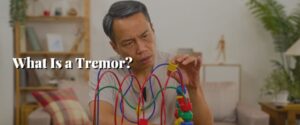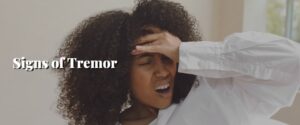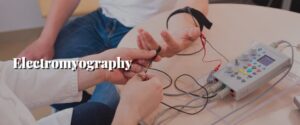Many of us have experienced tremors, and muscular twitches, when we wake up. While most people often experience the pain for a short while, others may experience the pain for an extended period — some can be moderate or innocuous.
This post aims to help you learn more about body tremors, understand the wide varieties, and gain insight into their causes.
It’ll discuss the various diagnostic approaches, the warning indications, and the range of potential therapeutic alternatives. The objective is to provide those who must deal with these tremors with the information they require to improve their quality of life.
What Is a Tremor?
Tremors are reflexive, recurring muscular spasms that cause one or more body parts to shake. The hands are most affected by this rapid movement condition, but it can also affect other body parts like the legs, arms, head, and chest.
Tremors can be continuous or discontinuous; the latter describes tremors that happen at different periods and are interspersed by pauses. They may seldom arise or as a result of another condition.
The middle age people and the older generation are at high risk of experiencing tremors, although younger people can also suffer from it. Gender is not a risk factor, so men and women are equally impacted.
At their worst levels, tremors can make everyday tasks challenging or even impossible, but there is no need to fret; a tremor is not life-threatening.
Causes of Tremor
Issues with the deeper brain regions that regulate your body’s motions cause tremors. The etiology of some types of tremors hasn’t been discovered since they are linked to specific brain regions.
Tremors can occur spontaneously or as a sign of a variety of neurological diseases, including:
- Stroke;
- brain damage brought on by trauma;
- Epilepsy;
- Parkinson’s disease and multiple sclerosis are two neurodegenerative illnesses affecting specific brain areas (MS).
Additional causes include:
- abusing or quitting alcohol;
- mercury poison;
- sleep deprivation;
- anxiety disorder;
- hyperthyroidism, a term for an overactive thyroid gland;
- severe liver or renal diseases;
- hypoglycemia is commonly referred to as low blood sugar;
- pharmaceutical side effects, such as those from asthma drugs.
Tremor Classification
Based on movement, medical professionals have separated tremors into two primary categories:
- Resting tremors
- Action tremors
1. Resting Tremors
Resting tremor is experienced when the muscles are relaxed, such as when your hands are on a table. Typically, just the hands and fingers are impacted by these tremors. Resting tremors are lessened with intentional movements.
2. Action Tremors
On the other hand, action tremors take place while muscles are moving voluntarily. There are five subcategories of these tremors:
-
Kinetic Tremors
This tremor can be felt when doing tasks like sipping from a cup, buttoning a garment, or writing. Kinetic tremors are seen as being more severe and interfere with daily activities.
-
Intention tremors
This group of tremors appears with focused actions, such as touching the eye. As the person approaches the goal, the tremor grows worse.
-
Postural Tremors
Postural tremors develop when someone tries to maintain a position that defies gravity, such as keeping their hands above their heads.
-
Task-specific Tremors
You can only experience this tremor when you attempt to engage in a skill-required activity, such as speaking, writing, or sketching.
-
Isometric Tremors
Isometric tremors only occur when muscles are contracted voluntarily and do not involve movement, such as when holding a heavy cup in a specific position.
-
Internal Tremors
General shakiness, typically accompanied by a vibrating feeling inside the body, is the defining feature of internal tremors.
Types of Tremors
Tremors can also be divided into groups based on what caused them. The following are the most prevalent tremors out of the more than 20 different types:
- Essential tremor;
- Parkinsonian tremor;
- Cerebellar tremor;
- Dystonic tremor;
- Physiologic tremor;
- Psychogenic tremor.

1. Essential Tremor
Nervous system issues are the cause of essential tremors. However, people with this kind of tremor seldom show further signs of nervous system malfunction. Although the exact aetiology of these tremors is uncertain, family heredity is frequently a factor.
Even though they can happen at any age, essential tremors frequently begin in the early years of adulthood. These tremors are frequently referred to as senile since they worsen as a person ages and are more prominent. They frequently affect the hands and arms but can also hurt the brain. In such a situation, people typically appear to be nodding their head in agreement or shaking it in disagreement.
Essential tremors may not be severe, yet they can still be quite upsetting and unpleasant. These tremors impact a person’s writing skills and can even make utilising appliances challenging.
Essential tremors might get stronger with time in certain people, and common essential tremor symptoms might mirror Parkinson’s disease signs and symptoms. However, it is uncommon for someone to have Parkinson’s disease and essential tremors.
2. Parkinsonian Tremor
Parkinsonian tremors (PT), also known as resting tremors, affect more than 70% of people with Parkinson’s disease. The first PT symptoms are typically seen in the fingers before the condition gradually spreads to other parts.
PT can only affect one limb or side of the body at a time, but as the disease advances, it can affect the entire body. Strong feelings and stress can frequently make this tremor worse. More than 25% of Parkinson’s patients also have some activity tremor.
3. Cerebellar Tremor
Cerebellar tremors might occur when someone attempts to carry out a precise motion, like bringing a spoon to their lips, cerebellar tremors might happen. These tremors have low frequency with high amplitude, where the amplitude is the amount of movement and frequency is the speed of the tremor.
When someone has multiple sclerosis or a similar neurological disorder, medical experts typically identify cerebellar tremors in those people.
4. Dystonic Tremor
A person with dystonia has uncontrollable muscular twitches that simultaneously create twisting or repeated motions. Segmental dystonia, sometimes referred to as focal dystonia, is a movement disease that can affect one specific body area or two nearby ones. As the name implies, general dystonia may also impact the entire body.
Mild to severe muscular spasms are possible, with Dystonic tremors being uncomfortable and making it difficult to perform daily tasks.
5. Physiologic Tremor
We all experience tremors, making physiological tremors known as typical tremors. For instance, you could occasionally feel a tiny tremble when holding hands. Physiologic tremors can sometimes become quite apparent and disturb people. Physical tremors are more likely to get worse if someone:
- Suffers from anxiety and stress;
- Regularly consumes a lot of caffeine;
- Certain prescription drugs, such as corticosteroid and asthma medicines, are taken;
- Has a history of certain illnesses, such as hyperthyroidism.
6. Psychogenic Tremor
Functional tremors, another name for psychogenic tremors, can appear as any tremor. Their symptoms might differ significantly. However, they frequently occur suddenly and affect the entire body. When a person is stressed, their psychogenic tremors rise, and when the tension is gone, they subside or even entirely away. Some people with psychogenic tremors also experience mental health issues, including depression or post-traumatic stress disorder (PTSD).
Signs of Tremor
Here are some typical signs that can need consulting a neurologist for medical advice:
- Body tremors that came out of the blue;
- If you experience tremors in your body but are under 50 and no one else in your lineage has essential tremors;
- If you have any neurological symptoms, such as muscular weakness, a change in the way you walk or talk, or a change in your mental condition;
Tremor Diagnosis
A medical expert can conduct neurological and physical exams and other diagnostic procedures to identify bodily tremors.
Neurological and Physical Examinations
Typically, physical examinations are the initial stage, and they’re done to:
- Confirm if the twitches happen while the muscles are active or at rest;
- Find the tremor’s location
- Determine if only one side of the body is trembling or the complete body;
- Confirm the tremor’s frequency and amplitude.
After that, the doctor may perform a neurological examination to look for the following things:
- Abnormalities in speech;
- Impaired equilibrium;
- Stiffness in the possibly afflicted muscle.
Other Diagnostic Tests
Healthcare experts can request the following diagnostic tests to establish the causes of bodily tremors:
Urine and blood tests.
These tests can rule out specific causes of body tremors, such as pharmaceutical side effects, drug interactions, drinking, and thyroid gland malfunction.
Diagnostic imaging of the brain
Doctors can use MRI (magnetic Resonance Imaging) or Computed Tomography (CT) to do diagnostic brain imaging. If the individual has other neurological symptoms indicating a brain condition, such as multiple sclerosis or Parkinson’s disease, a tumour, or a stroke, or if the tremors have worsened, this diagnosis can be employed.
Electromyography.
This entails muscular activation and electrical activity recording, which is seldom done.
Treatment Options for Tremor
Tremor therapy differs from person to person, based on the tremor’s kind, degree, and cause. Specific therapies can help reduce the frequency and severity of bodily tremors.
Medications
Medications can aid with the management of bodily tremors. Propranolol and other beta-blockers, also used to treat high blood pressure and heart rate, are among the drugs that might cause tremors.
Anti-seizure and epilepsy medications such as primidone, benzodiazepines such as clonazepam, and Parkinson’s disease treatments such as levodopa are also used to treat tremors.
Botulinum toxin, often known as Botox, can be used to alleviate bodily tremors in select scarce circumstances.
Procedure Without the Use of Surgery
Non-surgical treatments for tremors might sometimes be the most effective.
Focused Ultrasound
The thalamus, a region of the brain, is responsible for the majority of human movement. Body tremors will result from injuring or disrupting the thalamic nerves. In this scenario, focused ultrasound directs a ray of ultrasound waves directly to the injured or disturbed nerves, resulting in tremor relief.
Ablation by Using a Radiofrequency
You can produce an electric current by employing radio waves, interfering with the injured nerves’ capacity to receive and send messages, alleviating the tremors.
Changing Your Lifestyle
This is possibly the most non-invasive treatment for bodily tremors and can help people regulate their tremors. Some ways you can change your lifestyle include:
- Avoid using nicotine and caffeine products
- Speech therapy for vocal cord tremors
- physical therapist
Bottom Line
There are many bodily tremors, but they share the same flaw: none can be treated independently, and most of the time, they are linked to neurological diseases. However, people with tremors can employ various treatments to find comfort.





